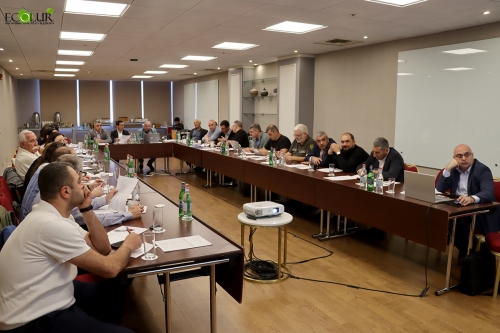

On October 16, 2025, a workshop was held in Yerevan dedicated to discussing the feasibility of conducting an inventory of plant and animal species used for industrial and social purposes, as well as their habitats.
The event was organized by WWF-Armenia within the framework of the biodiversity and protected areas component of the program “Biodiversity and Sustainable Local Development in Armenia.” Participants included representatives from the Ministry of Environment, the National Academy of Sciences of Armenia, universities, and non-governmental organizations.
Levon Aghasyan, Director of WWF-Armenia, noted that the purpose of the discussion was to review, together with experts, the existing lists of plant and animal species used for industrial and social purposes, identify possible gaps or omissions, and make necessary updates.
Sevak Baloyan, Head of the Department of Bioresource Management at the Ministry of Environment, emphasized that the inventory of plants and animals is of great importance to the Ministry. “Since Armenia’s independence, no comprehensive studies have been conducted — only partial research. This initiative will serve as an important stimulus not only for creating a national biodiversity database but also for promoting the sustainable and rational use of biodiversity,” he said.
Karen Manvelyan, head of the program’s biodiversity and protected areas component, stated that each year the Ministry of Environment sets hunting and plant collection quotas based on data provided by the Scientific Center of Zoology and Hydroecology of the National Academy of Sciences.
He added that the ministry plans to introduce a ‘SMART’ information system, which will be used in both state and community-managed environmental areas. “This is an important step, and we hope that by the time of COP17, we will be able to announce that the system is already functioning in Armenia,” Manvelyan said.
According to him, the purpose of the inventory is to determine which species are used for commercial or recreational purposes and to assess their reserves. “We must understand what time and resources are needed for the studies and the inventory process. This meeting serves as an initial stage — to assess the scope, timeline, and required funding,” he added.
Manvelyan also noted that on the second day of the workshop (October 17), a separate discussion would be held on the updating and revision of Armenia’s Red Book. “The Red Book was last published in 2010, and it is now necessary to assess which species have experienced changes in their conservation status and to include newly identified species,” he said.
Aram Gevorgyan, an information systems expert, presented the concept of a unified biodiversity information system for Armenia. He explained that, once established, the system would integrate various databases for inventory, monitoring, and Red Book revision purposes. “This platform will make it possible to consolidate information and serve as a foundation for evidence-based decision-making. For example, if the population of a species in a particular hunting ground decreases during the year, a hunting permit for that species could be withheld the following year. The system will serve as a biodiversity management tool — from fishing and plant collection permits to export control,” Gevorgyan noted.







October 16, 2025 at 17:02
